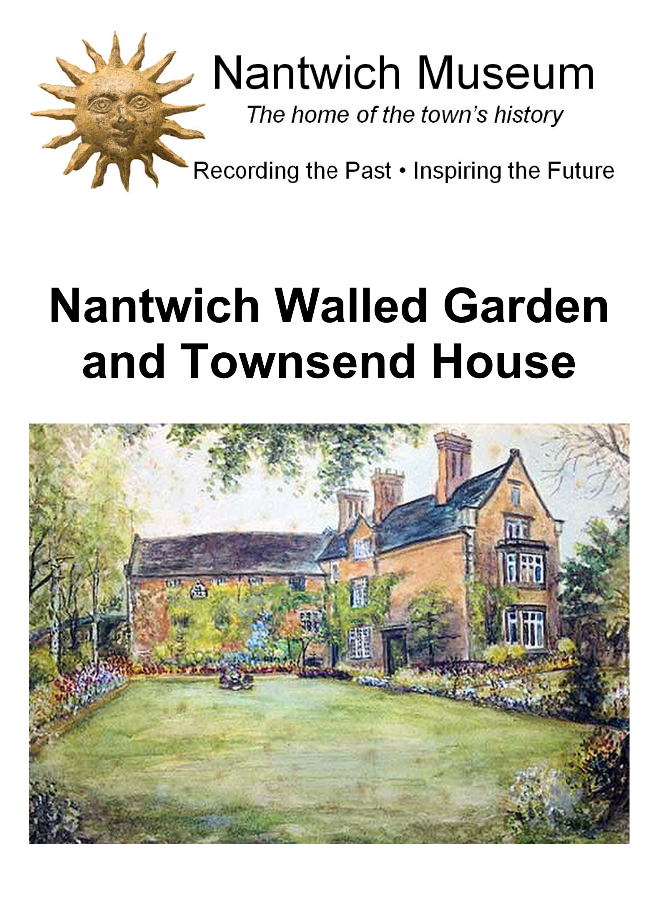Under the Wilbrahams
The garden was originally part of the site of Townsend House, which was situated to its west. The house was built between 1575 and 1580 by Richard Wilbraham whose descendants lived there for the next two centuries. The garden was largely created by his grandson, Thomas, who inherited the estate in 1612. The work and the materials used are listed in the Wilbraham archives, held at the Cheshire Record Office in Chester. From these records we know that Thomas created an elegant garden; some of the features he added included a garden house, an arbour and a carved stone lion! The garden was not merely decorative; it also had practical uses – there were three bee boles in the south wall and an extensive orchard.
After the Wilbrahams
The last Wilbraham to live at Townsend was George, who moved his family to a new house at Cuddington in 1780. By 1810 Townsend House was reported to be in “a state of dilapidation” and by 1818, only a small part of the original building remained. A brewery had been established on the site and was followed by a clothing factory owned by a prominent local Quaker family, the Harlocks. George Harlock built a new family house on the site in about 1850 and in the late Victorian period magistrates’ offices, a courthouse and a police station were added nearby. George Harlock & Co went into liquidation in 1881 and the house and factory were subsequently owned by Frank Gilbert, who established a shoe factory there. In 1911, the house was purchased by Arthur Bevan, a well-known local solicitor, and he and his family lived there for over 50 years. The house was demolished after his death and a commercial garage, Grocott’s, was built on the site; this was demolished in 1997 to make way for the King’s Court development.
The garden
Despite the changes, the walled garden has remained largely intact. The detailed 1851 OS map of Nantwich shows a raised terrace at one end and an orchard. A timber-framed summerhouse was later built in the north-western corner of the garden, and there were lean-to buildings and a greenhouse against the south-facing wall. It is thought that the garden was cultivated until the 1970s. The land was then used for grazing until 2001, when the garden site and adjacent farmland were sold for development. The orchard survived for a few more years but was destroyed by the then owner in the belief that he would obtain planning permission to build houses on the garden; this was refused, as all the subsequent applications have been. The garden today is sadly neglected but it has the potential to be a true community asset of immense benefit to the town of Nantwich, its residents and its visitors.

https://nantwichmuseum.org.uk/product/nantwich-walled-garden-and-townsend-house/

